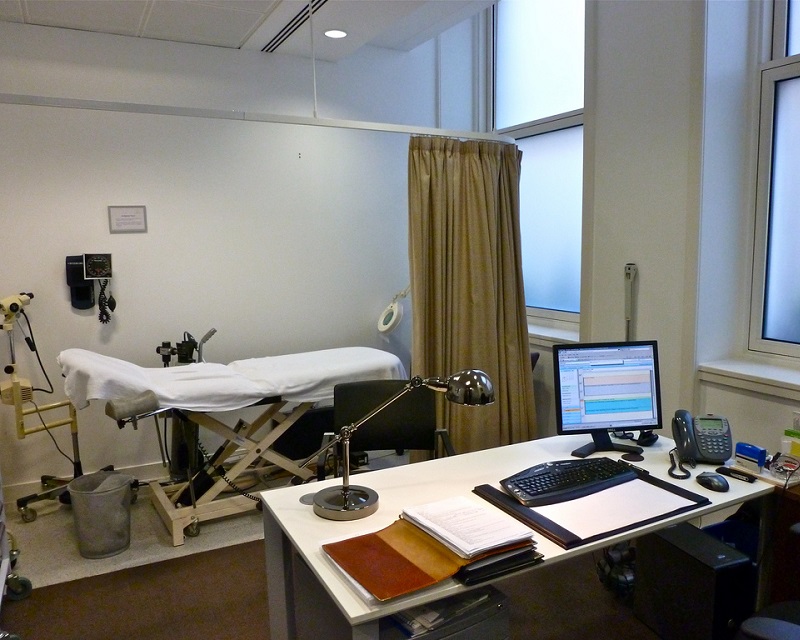
A woman comes to the emergency room for severe stomach pain with a man who identifies himself as her brother-in-law and offers to translate for her. She does not make eye contact with ER staff or her brother-in-law, who explains that she has been in pain for a while but does not have insurance. A nurse explains to the brother-in-law that she needs to examine each patient privately, and the brother-in-law says something harshly to the patient in another language.
Through the interpreter, the patient informs the nurse that she helps clean her brother-in-law’s house and provides daily child care. He supervises all of her phone calls and scrutinizes every phone bill.
Hospital staff diagnose her with a stomach ulcer, and write her a prescription. Obviously troubled, the patient says she’s been to another ER and was told the same thing, but had to stop taking the medicine because she couldn’t afford it and couldn’t go to the pharmacy to pick it up.
Does anything in this story indicate a trafficking situation? Should the hospital staff try to intervene before discharging the patient with her brother in law?
Labor and sex trafficking are both physically demanding, and whether for emergency or preventative care, victims of human trafficking will likely end up seeking medical attention. Medical professionals have the unique opportunity to talk to patients one-on-one and discern if the patient is a victim of trafficking. If a medical professional is able to identify a potential trafficking situation, he or she can connect that victim to the appropriate services that may save that victim’s life.
Why medical staff?
In one study, 88% of trafficking victims reported accessing medical care during their trafficking situation.
Every person in a healthcare setting has the opportunity to identify and help a trafficking victim. Dental offices, nurses, customer service staff, health educators, psychiatric units — all of these professionals could come into contact with victims of trafficking and should be made aware of the signs of trafficking.
Human trafficking needs to become a routine part of medical screenings and medical staff instruction. Victims are much less likely to slip through the cracks if they are being looked for.
What should medical professionals look for?
The keys to successful victim identification are learning the warning signs and having a pre-established protocol that every member of the office is aware of. This should include briefing staff about what subtle questions to ask, and the answers that are indicators of a problem.
Human trafficking victims can be associated with a wide range of physical and mental ailments. Victims of sex trafficking may seek gynecological care for Sexually Transmitted Infections or signs of physical trauma from being sexually assaulted repeatedly. Labor trafficking victims might go to an opthamologist with vision problems from working in low lighting day after day, or an emergency room for broken bones or skin rashes. Other common conditions reported by medical professionals who see trafficking victims include:
-
Malnutrition/Dehydration
-
Poor dental hygiene
-
Untreated skin infections/inflammations
-
Injuries or illness from exposure to harmful chemicals/unsafe water
-
Substance abuse issues
Because there is such a variety of physical and mental trauma that can be experienced by victims of trafficking, it is important for medical professionals to look beyond the presented injuries and hear the stories behind them.
Should hospital staff have let the patient with the stomach ulcer leave with her brother-in-law without finding out more about her situation? No. The patient indicated she had a lack of control over her life, had a daily schedule that prevented her from accessing a pharmacy, and was too poor to afford her medication despite working every day. This is the type of situation where a medical professional can make a difference in the life of a trafficking victim.
*The NHTRC is now the U.S. National Human Trafficking Hotline.
Photo credit: Herry Lawford / Flickr


